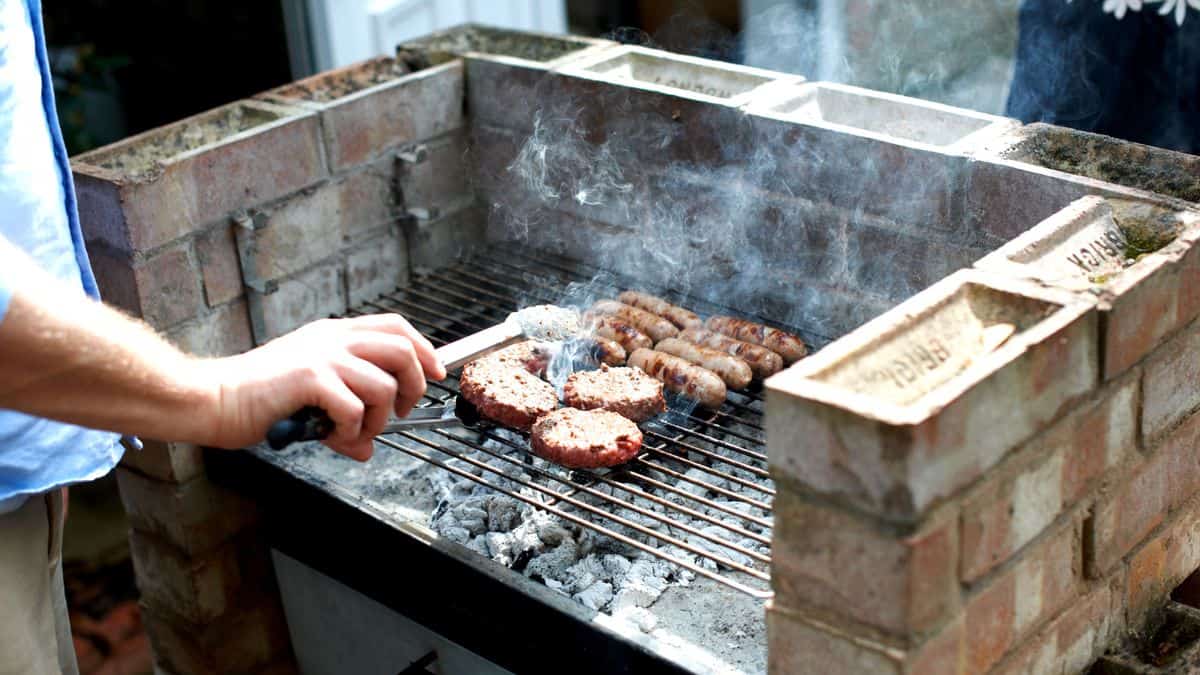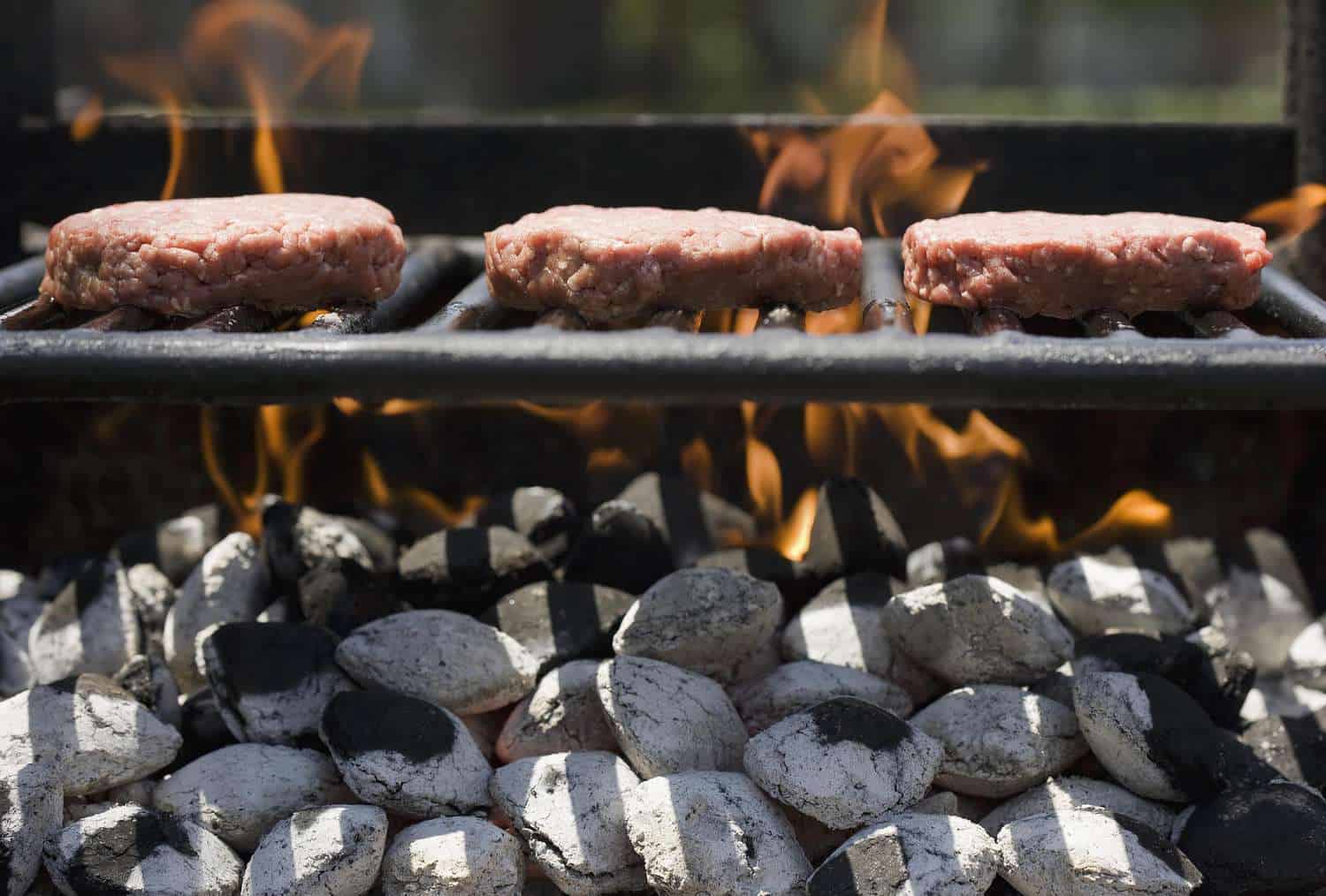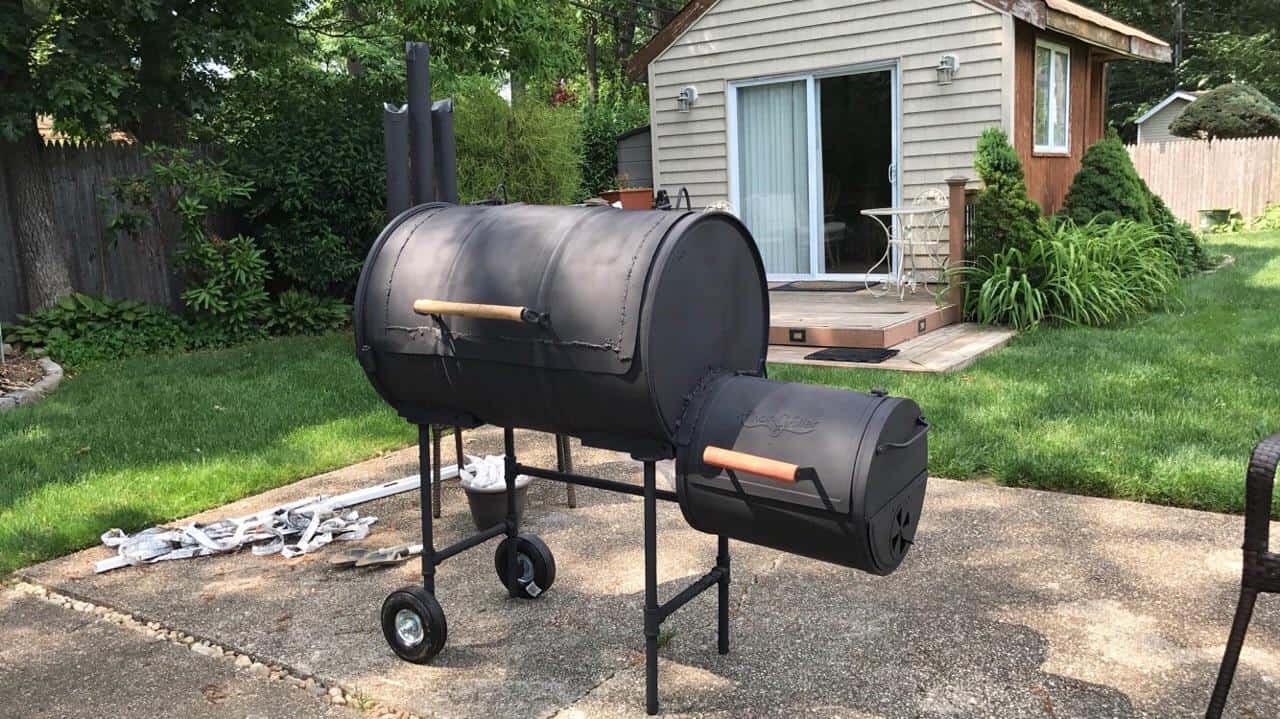To build a BBQ smoker, assemble a heat-resistant structure with separate compartments for the firebox and cooking chamber, connect them for indirect heat flow, and include vents and a chimney for temperature and smoke control.
The Ultimate Guide to Building a BBQ Smoker: Everything You Need to Know
There’s something incredibly satisfying about building something with your own hands, and building your own BBQ smoker is no exception. Not only do you get the joy of creating something from scratch, but you also have the opportunity to customize it to fit your specific needs and preferences. Whether you’re a seasoned pitmaster or just starting out, building your own smoker allows you to create a cooking apparatus that is tailored to your style of cooking and the flavors you love.
Another advantage of building your own BBQ smoker is the cost savings compared to buying a pre-made smoker. While there are certainly high-end smokers on the market that can cost thousands of dollars, building your own can be done for a fraction of the price. By sourcing your own materials and doing the work yourself, you can save money without sacrificing quality.
Finally, building your own BBQ smoker gives you the ability to create delicious, smoky flavors right in your own backyard. There’s nothing quite like the taste of slow-cooked, smoky meats, and with your own smoker, you can enjoy that flavor anytime you want. Whether you’re smoking ribs, brisket, or even vegetables, having a smoker at your disposal opens up a world of culinary possibilities.
Choosing the Right Materials for Your BBQ Smoker
When it comes to building a BBQ smoker, one of the most important decisions you’ll make is choosing the right materials. While there are many options available, steel is often the material of choice for its durability and heat retention properties. Steel is able to withstand high temperatures without warping or melting, making it ideal for use in a smoker.
When selecting steel for your smoker, it’s important to consider the thickness and durability of the material. Thicker steel will retain heat better and provide more insulation, resulting in more consistent cooking temperatures. Additionally, thicker steel is less likely to dent or warp over time, ensuring that your smoker will last for years to come.
In addition to steel, there are other materials that can be used for certain parts of the smoker. For example, ceramic or firebrick can be used to line the firebox or cooking chamber to provide additional insulation. However, these materials can be more expensive and may not be as readily available as steel.
Designing Your BBQ Smoker: Tips and Tricks
Before you start building your BBQ smoker, it’s important to spend some time designing your smoker and planning out the details. This will help ensure that you end up with a smoker that meets your needs and functions properly.
One of the first steps in designing your smoker is to sketch out your design on paper. This will give you a visual representation of what your smoker will look like and allow you to make any necessary adjustments before you start building. Consider the size and shape of the smoker, as well as any additional features you want to incorporate, such as shelves, hooks, or thermometers.
When designing your smoker, it’s important to consider airflow and ventilation. Proper airflow is essential for maintaining consistent cooking temperatures and preventing flare-ups. Make sure to include vents and dampers in your design to allow for precise temperature control.
Another important consideration when designing your smoker is easy access to the firebox and cooking chamber. You’ll need to be able to add fuel, adjust vents, and check on the progress of your food throughout the cooking process. Plan for easy access points that won’t disrupt the cooking process or cause heat loss.
Building the Firebox: A Step-by-Step Guide
The firebox is an essential component of any BBQ smoker, as it provides the heat and smoke needed for cooking. Building a firebox requires cutting and welding steel, so it’s important to take proper safety precautions and have the necessary tools on hand.
To start building the firebox, you’ll need to cut the steel to the desired size and shape. This will depend on the design of your smoker and the amount of cooking space you want. Once the steel is cut, you’ll need to weld the pieces together to create a sturdy and secure firebox.
Next, you’ll need to add vents and dampers to the firebox. These will allow you to control the airflow and temperature inside the smoker. Make sure to position the vents and dampers in a way that allows for easy adjustment while cooking.
After the vents and dampers are installed, you’ll need to add a fire grate and ash pan to the firebox. The fire grate will hold the fuel, such as charcoal or wood, while the ash pan will catch any ashes or debris. These components are important for maintaining proper airflow and preventing flare-ups.
Finally, you’ll need to attach the firebox to the cooking chamber. This can be done using hinges or bolts, depending on your design. Make sure that the connection between the firebox and cooking chamber is secure and airtight to prevent heat loss.
Creating the Cooking Chamber: Size, Shape, and Placement
The cooking chamber is where all the magic happens in your BBQ smoker, so it’s important to carefully consider its size, shape, and placement.
When determining the size of your cooking chamber, it’s important to consider your needs and how much food you plan on cooking at once. If you frequently entertain large groups or plan on smoking large cuts of meat, you’ll want a larger cooking chamber. On the other hand, if you typically cook for smaller groups or have limited space in your backyard, a smaller cooking chamber may be more appropriate.
In addition to size, the shape of your cooking chamber can also impact its performance. A cylindrical shape is often preferred for smokers because it maximizes airflow and heat distribution. However, other shapes, such as square or rectangular, can also work well if designed properly.
When it comes to placement, you’ll want to choose a location in your backyard that is convenient and safe. Make sure to leave enough space around the smoker for airflow and to prevent any fire hazards. Additionally, consider the proximity to your house or other structures to avoid any potential smoke damage.
Selecting the Best Fuel for Your BBQ Smoker
The fuel you choose for your BBQ smoker will greatly impact the flavor of your food, so it’s important to choose wisely.
Wood is a popular choice for smoking because it imparts a rich, smoky flavor to the food. Different types of wood can produce different flavors, so it’s important to choose the right wood for the flavor you want. For example, hickory and mesquite are known for their strong, bold flavors, while fruitwoods like apple or cherry provide a milder, sweeter smoke.
Charcoal is another common fuel option for smokers. It burns hotter and longer than wood, making it ideal for low and slow cooking. Charcoal also produces less smoke than wood, which can be beneficial if you’re looking for a more subtle smoky flavor.
Gas smokers are another option for those who prefer convenience and ease of use. Gas smokers are fueled by propane or natural gas and offer precise temperature control. While they may not provide the same level of smoky flavor as wood or charcoal, they can still produce delicious results.
When using wood or charcoal as fuel, it’s important to properly light and maintain your fire. Start by lighting a small amount of fuel and gradually add more as needed. This will help prevent flare-ups and ensure a steady heat source throughout the cooking process. Additionally, make sure to monitor the temperature of your smoker and adjust vents and dampers as needed to maintain the desired temperature.
Adding Insulation and Airflow for Optimal Smoking
Insulation and airflow are two key factors in achieving optimal smoking results in your BBQ smoker.
Insulating the cooking chamber is important for retaining heat and maintaining consistent cooking temperatures. This can be done by adding a layer of insulation, such as ceramic or firebrick, to the walls of the cooking chamber. This will help prevent heat loss and ensure that your food cooks evenly.
In addition to insulation, proper airflow is essential for achieving the desired smoky flavor and preventing flare-ups. Adding vents and dampers to your smoker allows you to control the amount of air entering and exiting the smoker, which in turn controls the temperature and smoke production. Make sure to position the vents and dampers in a way that allows for easy adjustment while cooking.
Using a water pan is another way to regulate humidity and create a moist cooking environment. Placing a pan of water in the smoker helps prevent the food from drying out and adds moisture to the air, resulting in tender, juicy meat.
Building the Smoker’s Racks and Shelves
Racks and shelves are important components of any BBQ smoker, as they provide a place to hold your food while it cooks. When building your own smoker, it’s important to choose the right materials for your racks and shelves.
Stainless steel or chrome-plated steel are popular choices for smoker racks because they are durable, easy to clean, and resistant to rust. These materials can withstand high temperatures without warping or melting, making them ideal for use in a smoker.
When designing your racks and shelves, it’s important to consider your specific needs. Think about how much food you plan on cooking at once and how much space you’ll need. Additionally, consider any other features you want to incorporate, such as hooks for hanging sausages or thermometers for monitoring temperature.
Once you have your design finalized, you’ll need to weld or attach the racks and shelves to the cooking chamber. Make sure that they are securely fastened and able to support the weight of the food you plan on cooking.
Finishing Touches: Painting and Decorating Your BBQ Smoker
Once your BBQ smoker is built, it’s time to add some finishing touches to make it your own. One of the first steps is to choose a high-heat paint that will withstand the elements and protect the steel from rust. Look for a paint specifically designed for use on grills and smokers, as these are formulated to withstand high temperatures.
In addition to painting, you can also add decorative touches to your smoker, such as logos or designs. This is a great way to personalize your smoker and make it stand out. Just make sure to use heat-resistant materials and paints that won’t melt or burn when exposed to high temperatures.
Finally, before you start using your smoker, it’s important to seal any gaps or leaks to ensure optimal performance. Use high-temperature silicone or gasket material to seal any areas where smoke or heat may escape. This will help maintain consistent cooking temperatures and prevent flare-ups.
Testing and Seasoning Your New BBQ Smoker
Before you start cooking with your new BBQ smoker, it’s important to properly test and season it. This will help prevent rust and improve the flavor of your food.
To prepare your smoker for its first use, start by lighting a small fire and allowing it to burn for a few hours. This will help burn off any residual oils or chemicals from the manufacturing process. Make sure to monitor the temperature and adjust vents and dampers as needed to maintain a steady heat source.
After the initial burn, it’s time to season the cooking chamber. This involves coating the inside of the chamber with a thin layer of oil or cooking spray and allowing it to heat up for several hours. This process helps create a non-stick surface and prevents rust from forming.
During the seasoning process, it’s important to monitor the temperature and airflow to ensure everything is working properly. Make any necessary adjustments to vents and dampers to maintain the desired temperature.
Maintaining and Troubleshooting Your BBQ Smoker: Common Problems and Solutions
Once your BBQ smoker is up and running, it’s important to properly maintain it to ensure optimal performance. After each use, make sure to clean out any ashes or debris from the firebox and cooking chamber. This will help prevent flare-ups and ensure that your smoker continues to function properly.
Regularly inspect your smoker for any signs of wear or damage, such as rust or leaks. If you notice any issues, make repairs as needed to keep your smoker in top condition. Additionally, consider making upgrades or modifications as you gain more experience and learn what works best for you.
If you encounter any common problems with your smoker, such as temperature fluctuations or leaks, there are often simple solutions. For example, if you’re experiencing temperature fluctuations, check the vents and dampers to ensure they are properly adjusted. If you’re dealing with leaks, inspect the seals and gaskets to see if they need to be replaced.
By properly maintaining and troubleshooting your BBQ smoker, you can ensure that it continues to produce delicious, smoky flavors for years to come.
Originally posted 2024-02-07 01:49:07.



